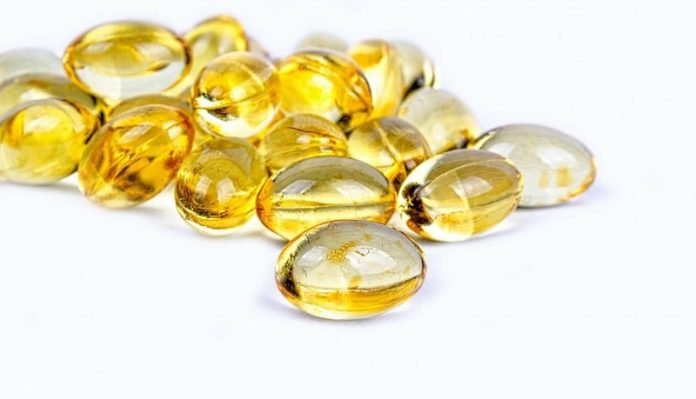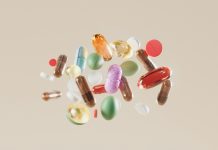
Vitamin D is both a nutrient we eat and a hormone our bodies make.
It is a fat-soluble vitamin that has long been known to help the body absorb and retain calcium and phosphorus; both are critical for building bone.
Also, recent studies show that vitamin D can reduce cancer cell growth, help control infections and reduce inflammation.
In a study from Oregon State University, researchers developed a new model for studying vitamin D’s role in infection prevention.
They found that vitamin D treatment can dramatically reduce the number of disease-causing bacteria in skin wounds.
In addition to shedding light on infection-prevention potential, the study is important because it showed a new way to probe the mechanisms through which vitamin D regulates an important antimicrobial peptide in the body.
Another study from the University of Eastern Finland found that a good vitamin D status is beneficial both in cancer prevention and in the prognosis of several cancers.
The anti-cancer effects of vitamin D are especially pronounced in the prevention and treatment of colon cancer and blood cancers.
In addition, high vitamin D responsiveness can be linked to smaller cancer risk. Vitamin D responsiveness varies between individuals, affecting their need for vitamin D supplementation.
The study provides an update on the molecular basis of vitamin D signaling and its role in cancer prevention and therapy.
According to the review, studies focusing on the effect of vitamin D on different types of cancers provide the strongest evidence of its benefits in colorectal cancer and in blood cancers, such as leukemias and lymphomas.
Vitamin D is important both for the differentiation of blood cells during hematopoiesis as well as adult stem cells in rapidly regenerating tissues, such as colon or skin.
A too-low vitamin D status leads to a suboptimal function of the vitamin D receptor (VDR) and in an increased risk that these cells are not fully differentiating and start to turn into uncontrolled growing cancer cells.
Even in other types of cancer, such as breast and prostate cancer, a low vitamin D status, measured as the level of 25-hydroxyvitamin D in the blood, has been associated with a higher cancer incidence and a poorer prognosis.
However, vitamin D supplementation has not been consistently shown to reduce cancer mortality in randomized controlled trials.
According to the team, the impact of vitamin D could be shown more clearly if the participants were stratified according to their individual vitamin D responsiveness and the health outcomes analyzed in relation to changes in individual vitamin D status.
A good vitamin D status is beneficial in general cancer prevention. There is less evidence of its usefulness in the treatment of cancer.
A third study at Seoul National University found taking vitamin D and calcium twice a day may reduce your chances of getting vertigo again.
The finding suggests that for people with benign paroxysmal positional vertigo, taking a supplement of vitamin D and calcium is a simple, low-risk way to prevent vertigo from recurring.
It is especially effective if people have low vitamin D levels to begin with.
Benign paroxysmal positional vertigo happens when a change in head position gives you a sudden spinning sensation. It’s one of the most common types of vertigo.
Treatment includes a doctor performing a series of head movements that shift particles in the ears that cause vertigo, but the condition tends to recur frequently.
About 86% of people with this form of vertigo find that it interrupts their daily life or causes them to miss days at work.
In the study, the team looked at 957 people in Korea with benign paroxysmal positional vertigo who were treated successfully with the head movements.
The participants were separated into two groups, intervention and observation. The 445 people in the intervention group had their vitamin D levels taken at the start of the study.
The 348 people with vitamin D levels below 20 nanograms per milliliter (ng/mL) were started on supplements with 400 international units of vitamin D and 500 milligrams of calcium twice daily, while those with vitamin D levels equal to or greater than 20 ng/mL were not given supplements.
The 512 people in the observation group did not have their vitamin D levels monitored and they did not get supplements.
The team found those in the intervention group who took the supplements had a lower recurrence rate for vertigo episodes after an average of one year than those in the observation group.
People taking supplements had an average recurrence rate of 0.83 times per person-year, compared to 1.10 times per person-year for those in the observation group, or a 24% reduction in the annual recurrence rate.
There appeared to be a greater benefit for those who were more deficient in vitamin D at the start of the study.
Those who started with vitamin D levels lower than 10 ng/mL saw a 45% reduction in annual recurrence rate, while those starting with vitamin D levels at 10 to 20 ng/mL saw only a 14% reduction.
A total of 38% of the people in the interventional group had another episode of vertigo, compared to 47% of those in the observation group.
This study suggests an inexpensive, low-risk treatment like vitamin D and calcium tablets may be effective at preventing this common, and commonly recurring, disorder.
A fourth study from University of California San Diego found in older men that the makeup of a person’s gut microbiome is linked to their levels of active vitamin D, a hormone important for bone health and immunity.
The findings also revealed a new understanding of vitamin D and how it’s typically measured.
Vitamin D can take several different forms, but standard blood tests detect only one, an inactive precursor that can be stored by the body. To use vitamin D, the body must metabolize the precursor into an active form.
In the study, the team analyzed stool and blood samples contributed by 567 men. The participants live in six cities around the United States, their mean age was 84, and most reported being in good or excellent health.
The researchers used a technique called 16s rRNA sequencing to identify and quantify the types of bacteria in each stool sample based on unique genetic identifiers.
They used a method known as LC-MSMS to quantify vitamin D metabolites (the precursor, active hormone, and the breakdown product) in each participant’s blood serum.
In addition to discovering a link between active vitamin D and overall microbiome diversity, the researchers also noted that 12 particular types of bacteria appeared more often in the gut microbiomes of men with lots of active vitamin D.
Most of those 12 bacteria produce butyrate, a beneficial fatty acid that helps maintain gut lining health.
Because they live in different regions of the U.S., the men in the study are exposed to differing amounts of sunlight, a source of vitamin D.
As expected, men who lived in San Diego, California got the most sun, and they also had the most precursor form of vitamin D.
The team says it seems like it doesn’t matter how much vitamin D you get through sunlight or supplementation, nor how much your body can store.
It matters how well your body is able to metabolize that into active vitamin D, and maybe that’s what clinical trials need to measure in order to get a more accurate picture of the vitamin’s role in health.
If you care about supplements, please read studies about vitamins that could prevent respiratory infections, and this daily vitamin is critical to cancer prevention.
For more information about nutrition, please see recent studies about how vitamin C could help over 50s retain muscle mass, and results showing one cup of leafy green vegetables a day can lowers your risk of heart disease.
Copyright © 2022 Knowridge Science Report. All rights reserved.



